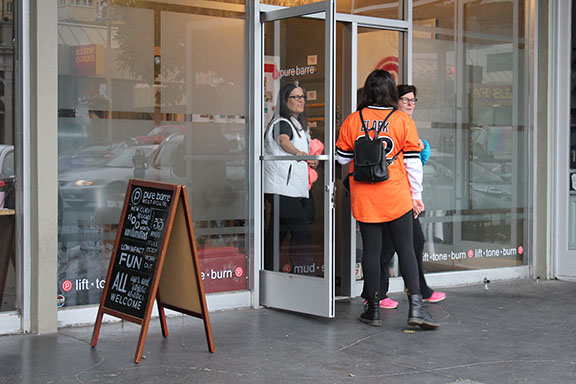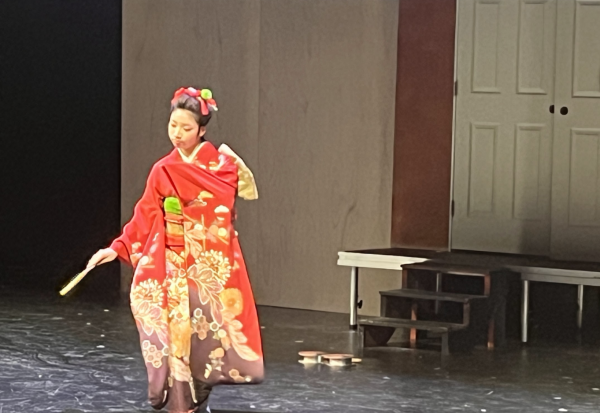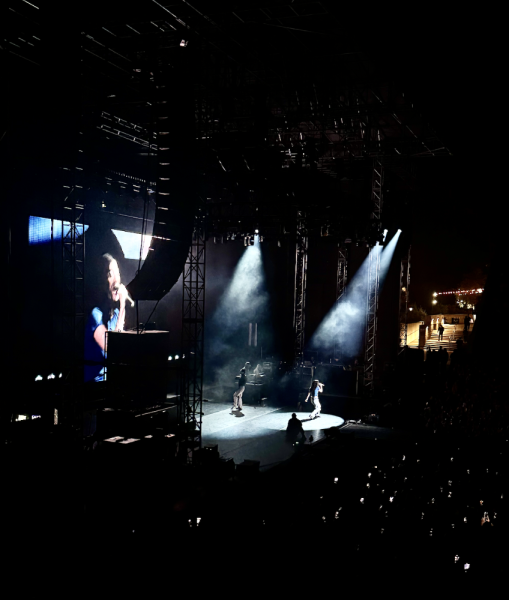Exercise method raises the barre
Ballet-type workouts provide low-impact exercise.

Clients leave Pure Barre on West Portal after their workout class. Barre classes have recently undergone a resurgence in popularity across the country.
May 17, 2016
Athletes interested in a supplemental workout and teenagers looking for a low-impact exercise are increasingly turning to workouts that look more like a ballet class than a traditional routine.
Created by ballet dancer Lotte Berk in London in the 1950s, barre workouts utilize the ballet barre for support and resistance.
“It focuses on all aspects of your body,” junior Grace Lachman, who has been attending classes at the Bar Method, one of the many franchises, since seventh grade, said. “You start with your arms, you do core, you do legs — you do everything.”
Barre workouts typically target muscles to create a dancer-type physique. Unlike other cardio-based workouts, barre workouts use small, controlled isometric movements to develop smaller muscles, according to Lauren Fike, owner of the West Portal Pure Barre studio.
“It’s tiny little movements where we keep firing from that specific muscle group throughout that whole exercise,” Fike said. “We stretch everything out in between to create long lean muscles.”
The typically hour-long classes start out with a warm up, then work muscles in the arms and legs followed by stretches and finish with core work before a cool down stretch.
“I really noticed a big difference in my muscles and how much stronger I got from this particular workout,” Lachman, who dances at City Ballet, said. “My dancing improved a lot from it.”
Besides dancers and gymnasts, barre workouts can benefit runners and athletes who have sustained injuries from high impact sports, according to Fike.
“Pure Barre compliments those kinds of athletes in that it’s low impact,” Fike said. “We are helping build those small muscle fibers to help support joints.”
Cross-training, training in more than one sport to improve performance and fitness, is one of the best ways to prevent injury and is important for any athlete, according to the American Academy of Pediatrics. Most sports injuries are due to overuse and can be prevented by stretching, as well as conditioning and strengthening muscles.
“It would be the perfect balance with cardio, cycling or running,” senior Lily Ross, who exercises at Cardio Barre, another barre studio, said. “We do a lot of stretching in the classes and it really helps with muscle building, but also muscle stretching and muscle relief.”
The classes of about 15 people are usually dominated by female clientele.
“You’re stretching and doing a lot of things that are challenging and I feel like I can push myself more because there are only women around,” Ross said. “You feel welcomed and there is
no judgement at all.”
Barre studios help improve the confidence of their clients by setting goals for each individual, according to Fike. From endorphin release to building community, barre workouts strive to be an enjoyable and beneficial form of exercise.
“You feel refreshed and motivated afterwards,” Lachman said. “I always feel more confident and better about myself.”









